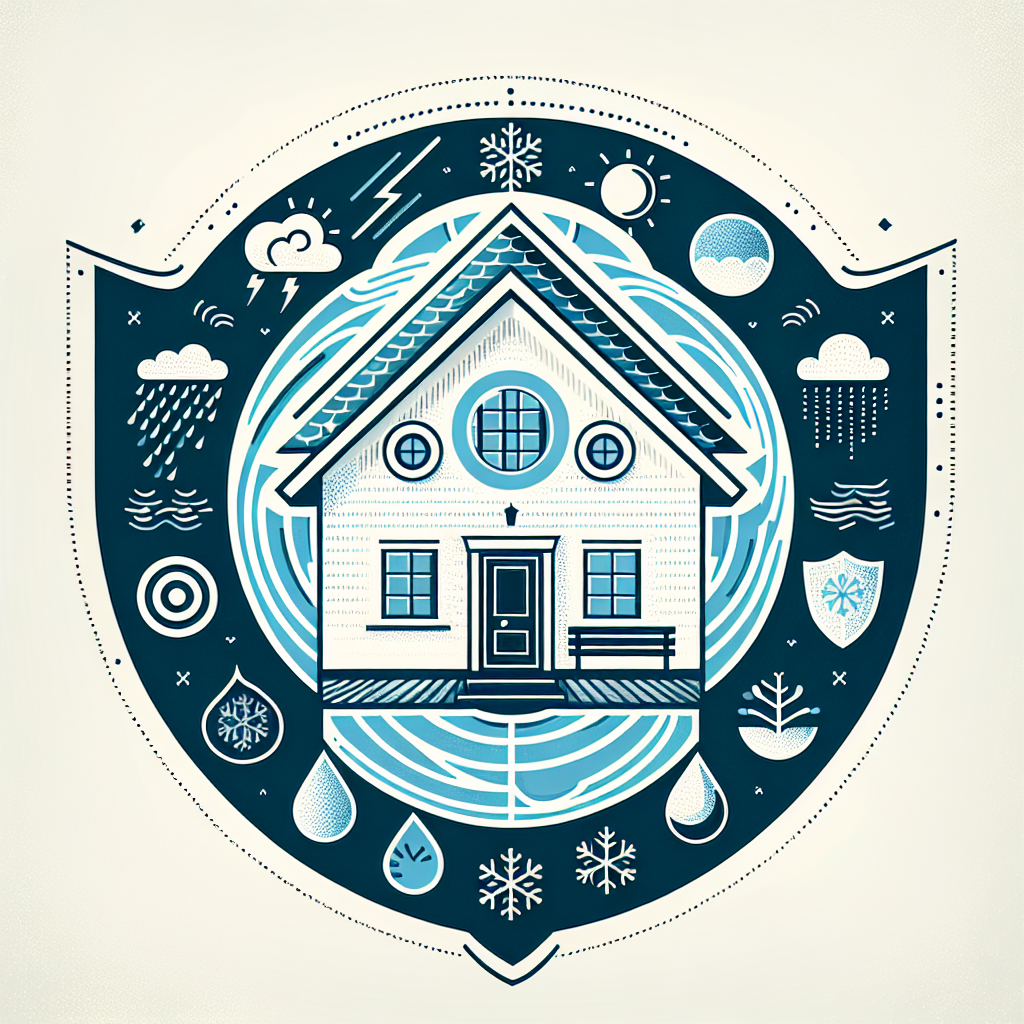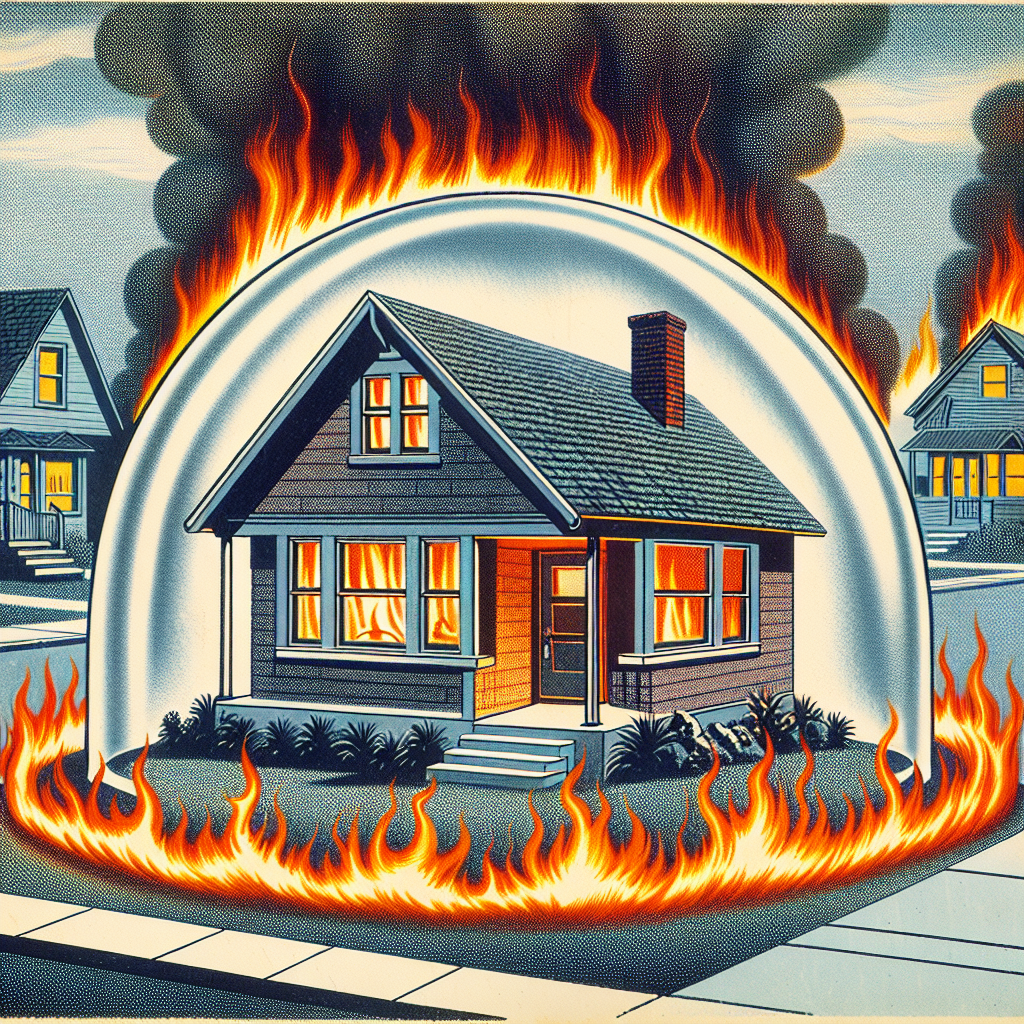Filed under Home Insurance on
Roof Coverage Home Insurance: What Is Covered

If you own a home, your roof is one of the most valuable parts of your property—and one of the most exposed to weather and wear. Understanding exactly what your policy covers before a storm hits can be the difference between a smooth claim and a costly surprise. This guide explains how roof coverage works in homeowners insurance, what’s typically covered or excluded, how deductibles and depreciation affect your payout, and the steps to take if you need to file a claim. Along the way, you’ll see how insurers are updating rules around roof age, materials, and perils like wind and hail, and what you can do right now to protect your investment.
Quick answer: what’s covered and what’s not
In most standard homeowners policies, the roof is part of the dwelling (Coverage A). That means sudden, accidental damage from covered perils is typically included. However, wear and tear, gradual deterioration, and installation defects are not. The clearest way to think about it: insurance responds to a sudden event, not to maintenance problems.
Common covered perils
- Windstorms and hail
- Fire and smoke
- Lightning
- Falling objects (e.g., a tree or limb during a storm)
- Weight of ice and snow
- Explosion, aircraft, riot or civil commotion
- Vandalism (if the home is not vacant beyond policy limits)
Common exclusions and limitations
- Wear and tear, aging shingles, and deterioration
- Rot, mold, and long-term seepage or leaks
- Improper installation or defective materials
- Animal or pest damage
- Cosmetic-only hail damage (often excluded on metal roofs by endorsement)
- Earth movement and floods (separate policies may apply)
- Neglect or failure to maintain the roof
Important nuance: if a storm creates an opening in the roof that lets water enter, the resulting interior water damage is often covered even if the roof itself has limited coverage. Conversely, if water enters due to a worn-out or poorly sealed roof with no storm damage, interior repairs may be denied.
How policies treat roofs: HO-3 vs. HO-5 and endorsements
The most common policy, an HO-3, covers the dwelling on an “open peril” basis—everything is covered except what’s excluded. An HO-5 broadens coverage in several ways, but both treat the roof as part of the dwelling. The catch: many insurers now add endorsements that specifically limit roof payments for certain perils or for older roofs. That’s why reading your endorsements is critical.
Typical roof-related endorsements you might see
- Actual cash value (ACV) settlement for wind/hail on roofs
- Roof surface payment schedule (pays a percentage based on roof age and material)
- Cosmetic damage exclusion for hail on metal roofs
- Wind/hail percentage deductible (e.g., 1% or 2% of the dwelling limit)
- Named storm deductible in coastal states
Because endorsements can dramatically change your settlement, many homeowners now compare policies specifically through the lens of roof coverage home insurance—especially in hail-prone regions where frequency and severity of severe convective storms have risen.
Replacement cost vs. actual cash value: what it means for your payout
Two concepts matter most in a roof claim: replacement cost value (RCV) and actual cash value (ACV). RCV pays the full cost to repair or replace with similar materials, without factoring in depreciation. ACV subtracts depreciation for age, condition, and remaining life, often reducing the payout substantially.
How a typical RCV claim pays out
- You pay your deductible.
- The insurer pays the ACV upfront (RCV minus depreciation).
- Once repairs are completed and documented, the insurer releases “recoverable depreciation,” bringing you up to the RCV—provided your policy allows it.
Example
Roof replacement cost: $18,000. Depreciation assessed: $6,000. Deductible: $2,000.
- Initial ACV payment: $18,000 - $6,000 - $2,000 = $10,000
- Recoverable depreciation after completion: $6,000
- Total reimbursement: $16,000 (you still pay the $2,000 deductible)
If your policy limits roof settlements to ACV for wind/hail, you will not get the recoverable depreciation, and your out-of-pocket costs will be higher. This is one reason shoppers increasingly compare roof coverage home insurance by verifying whether their roof is on RCV or ACV for specific perils.
How insurers are changing roof rules
Storm losses have surged in recent years. Industry data shows insured losses from severe convective storms in the U.S. set records in 2023, with totals exceeding $60 billion, and 2024 remained elevated. As costs climbed, carriers tightened underwriting. Common shifts include:
- Stricter roof age cutoffs (e.g., limiting RCV to roofs under 10–15 years)
- Mandatory wind/hail percentage deductibles in certain ZIP codes
- Cosmetic damage exclusions on metal roofs
- Roof schedules that reduce payout by age and material type
- Verification requirements like photos, inspection reports, or proof of reroofing
Independent testing groups have also pushed quality improvements. For instance, impact-resistant (IR) shingles tested to UL 2218 Class 4 can reduce hail damage, and many insurers offer premium discounts for them. When comparing roof coverage home insurance, ask about Class 4 discounts and any documentation required to qualify.
Roof materials and how they affect coverage
Material influences both durability and the way claims are handled. Insurers know the different risk profiles and sometimes apply distinct rules.
Asphalt shingles
- Most common and cost-effective
- Service life: roughly 15–30 years depending on quality and climate
- Frequent hail and wind claims in certain states
- Quality varies; architectural shingles typically outperform 3-tab
Metal roofing
- Highly durable, energy-efficient, long lifespan (40+ years)
- Often subject to cosmetic damage exclusions for hail (dents without functional failure)
- Insurers may still pay to repair or replace if damage affects performance or causes leaks
Tile (concrete, clay) and slate
- Excellent longevity but costlier to repair
- More susceptible to breakage from impact or foot traffic
- Matching tiles can be challenging, making “matching coverage” and ordinance or law coverage relevant
Wood shake/shingle
- Attractive but riskier for fire and weathering
- More stringent underwriting in wildfire-prone regions
- May require special endorsements or be ineligible with some carriers
Insurers may also consider roof geometry and pitch. For example, steep-slope and hip roofs often resist wind uplift better than flat or gable designs. When you shop for roof coverage home insurance, be prepared for questions on material, age, pitch, and any upgrades like hurricane clips or sealed roof decks.
Leak scenarios: when does insurance pay?
Coverage often hinges on whether a covered peril caused the leak.
Likely covered
- A windstorm tears off shingles, allowing rain inside
- A large branch punches a hole through the roof
- Ice dam causes sudden water intrusion and ceiling damage
Likely not covered
- Long-term seepage around a poorly sealed vent
- Leaks due to worn-out flashing or aged shingles with no storm damage
- Damage from algae, rot, or insect infestation
Even if the roof’s wear isn’t covered, interior damage might be if there’s a sudden event that caused the water intrusion. Document the cause carefully—photos showing missing shingles or impact points can make a difference.
Key endorsements and exclusions to watch
Small endorsements can have big consequences. Make sure you understand these before you have a loss.
Wind/hail deductible
Common in hail belts and coastal areas, this deductible is often a percentage of your Coverage A limit. If your home is insured for $400,000 and you have a 2% wind/hail deductible, you’ll pay $8,000 out-of-pocket for a qualifying roof claim.
Cosmetic damage exclusion
Usually applies to metal roofs. Dents or marring without functional impairment may not be covered. Functional damage that compromises performance can still be payable.
Roof surface payment schedule
Sets a maximum payout based on roof age and material—e.g., only 50–60% of replacement cost for older roofs. This can be more restrictive than ACV, so read carefully.
Ordinance or law coverage
Pays for code-required upgrades during repair or replacement, like underlayment, ventilation, or ice-and-water shield. Policies often include 10–25% of Coverage A by default; higher limits are available. Older homes benefit significantly from this coverage.
Matching coverage
If a portion of the roof is damaged, matching coverage addresses color and material match with the undamaged portion. Availability and rules vary widely by state and carrier.
Because these provisions can change your outcome, comparing roof coverage home insurance should include a side-by-side look at deductibles, settlement basis (RCV vs. ACV), and any roof-specific schedules or exclusions.
Maintenance that protects coverage and reduces premiums
Insurers expect reasonable maintenance. Good upkeep not only prevents loss but also strengthens your claim when a covered event occurs.
- Annual or biannual roof inspections (keep reports on file)
- Clean gutters to prevent ice dams and overflow
- Trim overhanging branches and remove dead trees
- Document repairs with dated photos and invoices
- Upgrade to Class 4 impact-resistant shingles where practical
- Ensure proper attic ventilation to extend shingle life
Some carriers offer discounts for mitigation steps like fortified roofs, secondary water barriers, or impact-resistant materials. Ask your agent which credits apply in your state.
How to file a roof claim, step by step
Fast, thorough documentation is your best ally. Follow these steps to protect your home and your settlement.
- Mitigate further damage. Tarp openings and stop leaks. Keep receipts for emergency repairs.
- Document everything. Photograph the roof, yard (look for shingles), exterior elevations, attic, ceilings, and any personal property damage.
- Check your policy. Note your deductible, whether your roof is ACV or RCV for the peril, and any roof endorsements.
- Notify your insurer promptly. Many policies require “prompt notice.” Provide dates, cause, and initial documentation.
- Meet the adjuster. Be present or have your contractor attend. Share your photos, invoices, and inspection reports.
- Get detailed estimates. Request line-item estimates that specify materials (e.g., underlayment, ridge vents, flashing) and code-required upgrades.
- Review the settlement. Confirm scope matches damage. If you have RCV, understand how to recover depreciation after completion.
- Handle supplements. If hidden damage is discovered, your contractor can submit a supplement with photos and code citations.
- Keep timelines in mind. Some policies have strict deadlines for repairs and for claiming recoverable depreciation.
Beware of signing over benefits or proceeds without understanding terms. If you consider an assignment of benefits or a public adjuster, research local regulations, fees, and reputations. A reputable, licensed roofing contractor familiar with insurance work can often navigate supplements and code items effectively.
Cost factors and how a claim affects your premium
Roof-related premiums and claim outcomes depend on location, age, and construction. Here are common factors that carriers evaluate:
- Roof age, material, and condition
- Local weather risk (hail, wind, wildfire, hurricane)
- Deductible choice (higher deductibles lower premiums)
- Upgrades like impact-resistant shingles or fortified roof standards
- Home characteristics: replacement cost, square footage, pitch, and roof geometry
- Claim history (CLUE reports may reflect prior losses)
After a roof claim, premiums can rise, though state rules vary. Weather-related claims often have less impact than preventable losses, but multiple claims within a short span can trigger nonrenewal in high-risk regions. It can be worth paying for minor repairs out-of-pocket to preserve your claims record, especially if you have a high deductible.
Shopping checklist: get the most from your policy
To make an apples-to-apples comparison, focus on the terms that most affect a roof claim.
- Settlement basis for roofs by peril: RCV or ACV?
- Any roof surface payment schedule? Review the age and material matrix.
- Wind/hail or named storm deductible: flat dollar or percentage?
- Cosmetic damage exclusion on metal roofs?
- Ordinance or law limit: enough for local code? Consider increasing to 25–50%.
- Matching coverage: does it apply to roofing?
- Age and documentation requirements: photos, inspection reports, proof of reroof
- Discounts for Class 4 shingles or fortified roof features
- Financial strength and claims reputation of the carrier
Ask agents to provide the actual endorsement forms so you can see precise language. A few minutes of review now can save you thousands later and ensures your roof coverage home insurance aligns with your risk.
Claims examples to make it concrete
Hailstorm, 12-year-old asphalt roof, cosmetic-only dents
The adjuster finds hail impacts that dent metal vents but no functional shingle damage. If the policy has a cosmetic damage exclusion for metal, vents may not be covered unless function is impaired. Shingles likely not paid. Ordinance or law coverage is irrelevant if no replacement occurs.
Windstorm removes shingles; interior leak damages drywall
Photos show missing shingles and water stains below. With RCV, the insurer pays ACV upfront minus the wind deductible, then releases depreciation after replacement. Interior repairs like drywall and paint are typically covered, less deductible.
Long-term leak around chimney flashing
Inspection reveals rusted flashing and rot. No storm-related damage. This is usually denied as wear and tear. The homeowner pays out-of-pocket. Keeping records of maintenance and timely repairs can prevent this scenario.
Frequently asked questions
Does homeowners insurance cover a full roof replacement?
Yes, if a covered peril caused damage significant enough to require replacement and your policy pays RCV for that peril. If you have ACV-only roof coverage for wind/hail, you’ll receive a depreciated payout.
Are older roofs still insurable?
Often, but terms may be stricter. Some carriers reduce coverage to ACV or require higher deductibles once the roof passes a certain age. Others may nonrenew if the roof is beyond its expected life.
What is a roof schedule?
An endorsement that caps payments based on roof age and material. For example, a 15-year-old asphalt roof might only be eligible for 50–60% of replacement cost, regardless of condition.
Will insurance pay for matching shingles?
It depends on your policy and state regulations. Some carriers offer matching coverage, but many do not. Without it, they may only repair the damaged slope or section.
What if only part of my roof is damaged?
The insurer may pay to repair or replace the damaged area. If undamaged areas cannot reasonably match, matching coverage (if included) or applicable state guidelines could support broader replacement.
Are leaks covered?
Leaks caused by sudden, accidental events (like wind tearing shingles) are usually covered. Leaks from wear, neglected maintenance, or long-term seepage are generally not.
Do impact-resistant shingles lower premiums?
Often. Many insurers offer discounts for UL 2218 Class 4 shingles. You may need proof, such as an invoice or manufacturer documentation.
Documentation that strengthens your claim
Create a simple digital file for your roof that includes:
- Original installation contract and warranty
- Photos from multiple angles after installation and after major storms
- Inspection reports and maintenance receipts
- Any permit records and code upgrades
- Proof of materials (e.g., Class 4 shingles certificate)
This record speeds claim review and helps demonstrate condition before the loss, especially valuable when adjusters must distinguish hail impacts from preexisting wear.
Common pitfalls and how to avoid them
- Assuming all storm damage is covered: endorsements may limit roof payouts.
- Delaying mitigation: failure to tarp or dry can lead to additional damage that isn’t covered.
- Choosing the lowest bid: inadequate scope can omit code-required items you’re entitled to under ordinance or law coverage.
- Missing deadlines: policies can set time limits for filing, repairing, and recovering depreciation.
- Not verifying contractor credentials: check licensing, insurance, references, and local presence.
What experts and trends suggest
Insurance market data indicates severe convective storms have become a leading driver of homeowners claims frequency and severity. Analysts and building scientists emphasize mitigation—impact-resistant materials, improved nailing patterns, better underlayments, and secured roof edges—as cost-effective defenses. In parallel, carriers are refining roof coverage terms to manage volatility. The practical takeaway: prevention plus the right policy language offers the best financial resilience.
Action plan for homeowners
- Review your declarations page for deductibles and roof-related endorsements.
- Confirm whether your roof settles on RCV or ACV for wind/hail.
- Check your ordinance or law limit; consider increasing if remodeling older homes.
- Schedule an inspection if the roof is 10+ years old; address small issues now.
- Ask your agent about Class 4 discounts and required proof.
- Keep a photo log—after installation and after major storms.
Approaching your policy with a roof-first mindset ensures your roof coverage home insurance reflects the real risks your property faces and the outcomes you expect after a storm.
Pro tip: compare claims experience, not just price
Two quotes with similar premiums can behave very differently at claim time. Look beyond price to assess claims handling reputation, speed of payment, local adjuster availability, and the ease of supplements for hidden damage. If possible, speak with a local contractor about carriers they find responsive in your area, particularly for roof claims. It’s a practical way to gauge real-world performance.
Final thoughts
Your roof protects everything underneath it. The right combination of maintenance, materials, and coverage can save thousands when weather turns severe. Start by confirming whether your policy settles roof claims on RCV or ACV, review endorsements that modify roof payments, and adjust deductibles to a level you can afford during an emergency. With a clear understanding of roof coverage home insurance, you can make confident decisions, minimize surprises, and keep your home protected for years to come.





